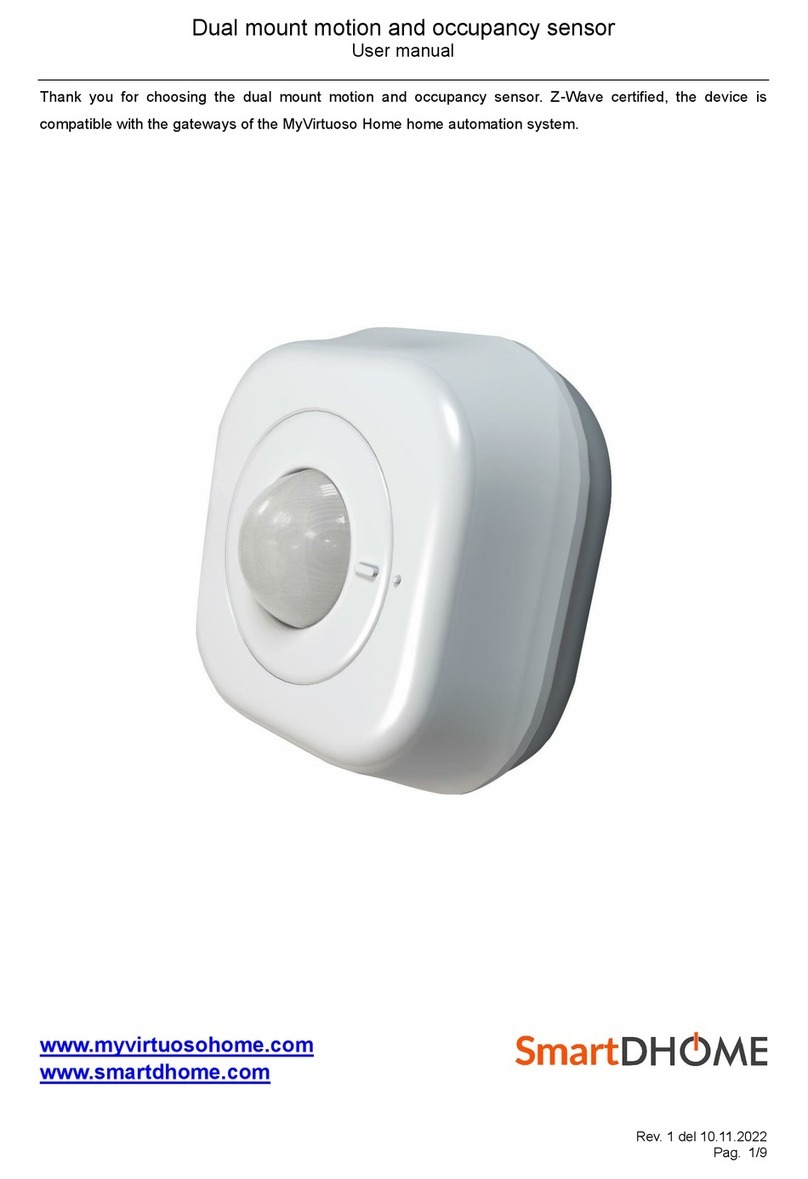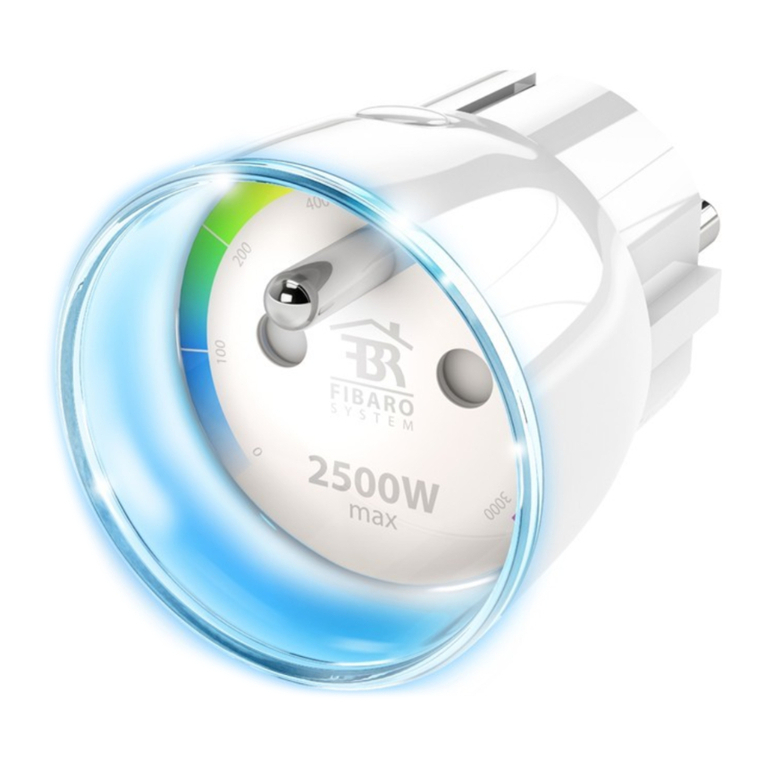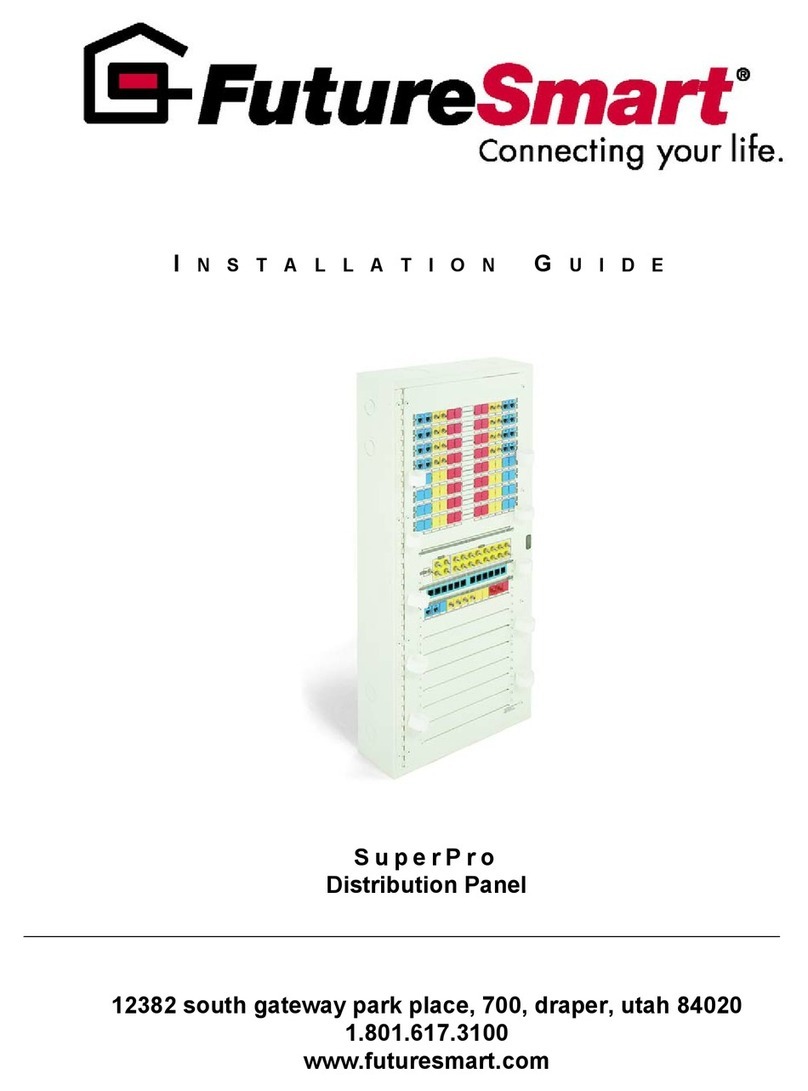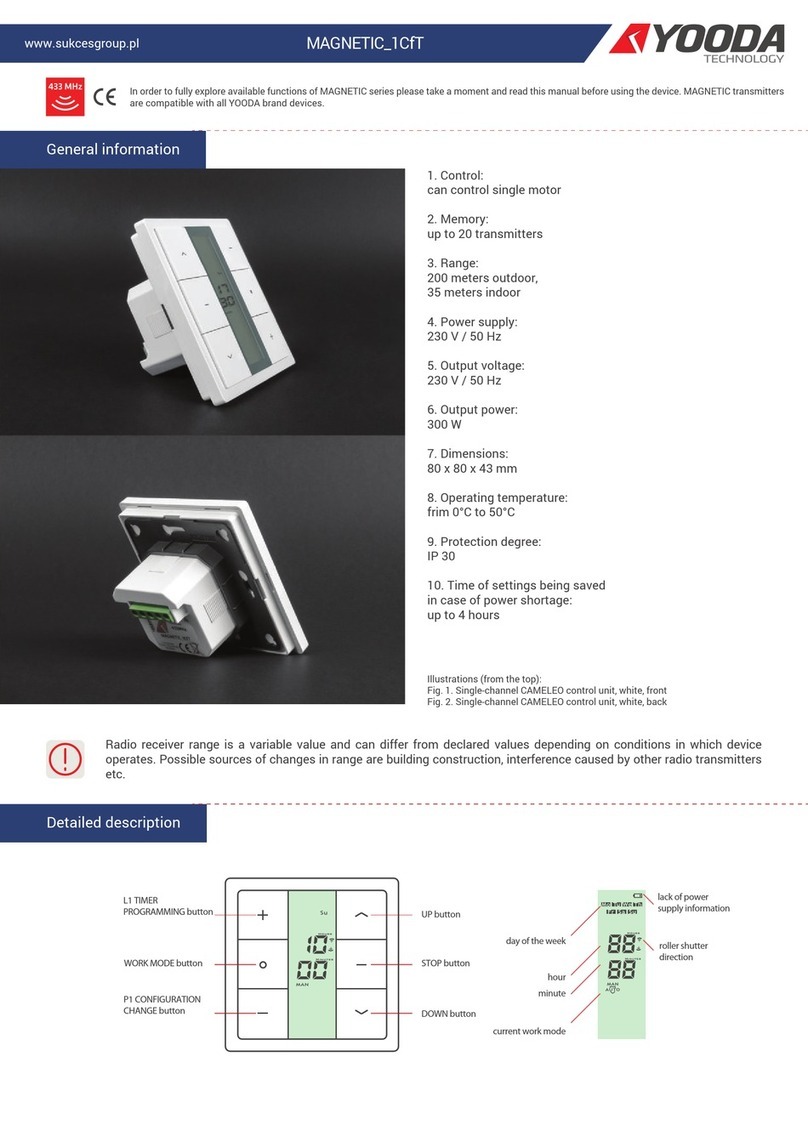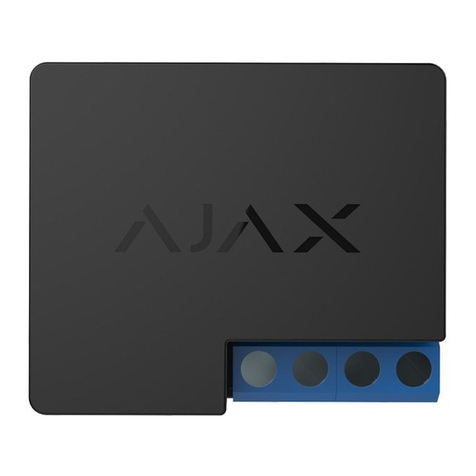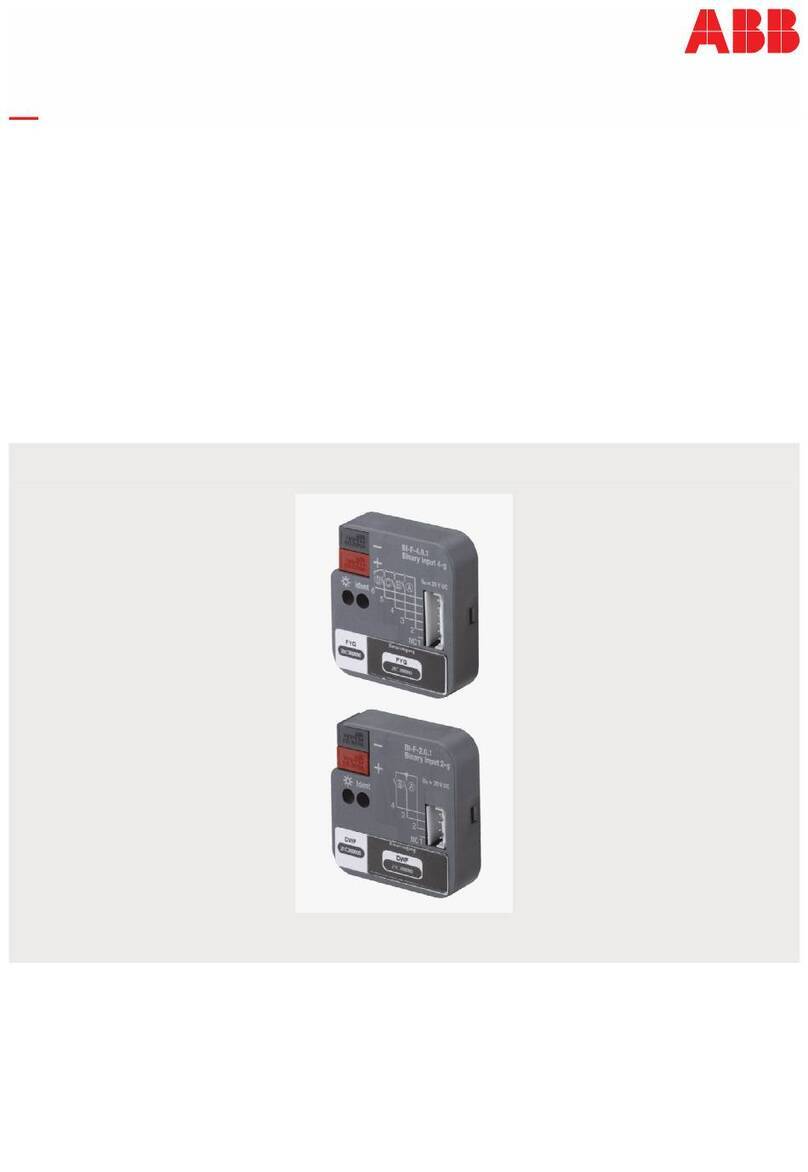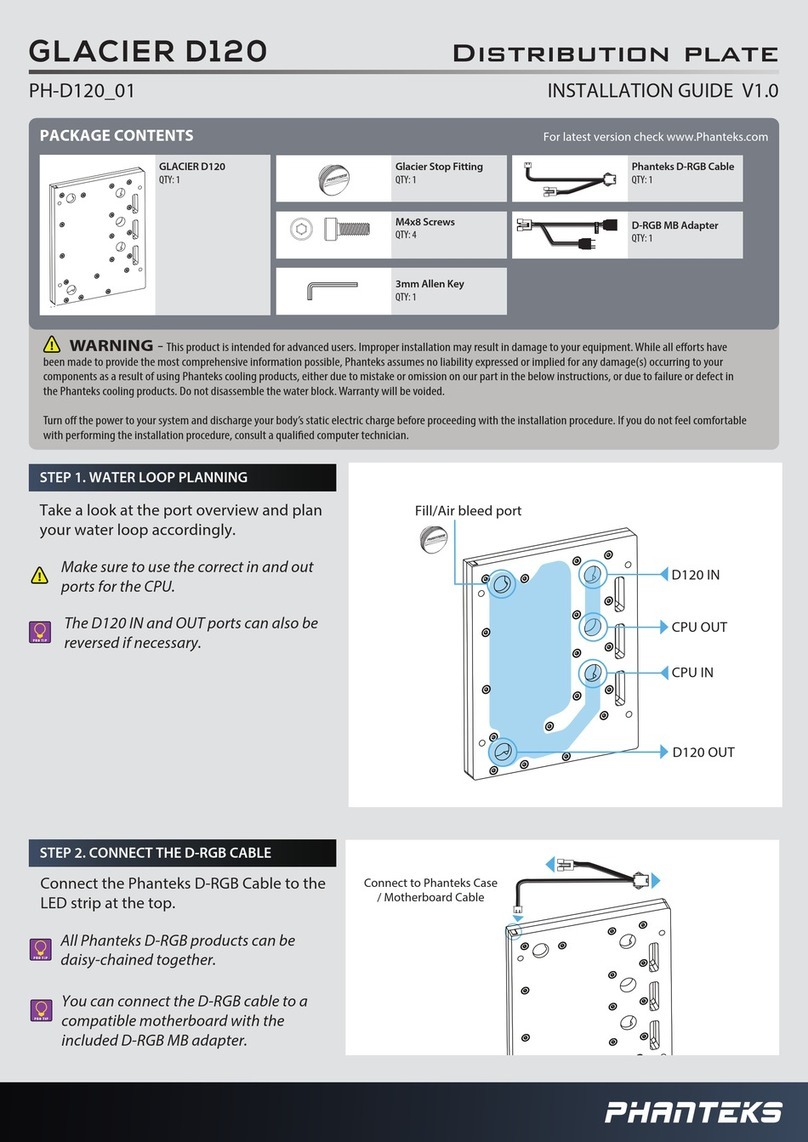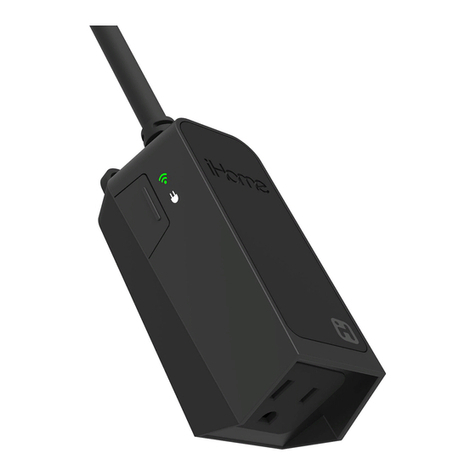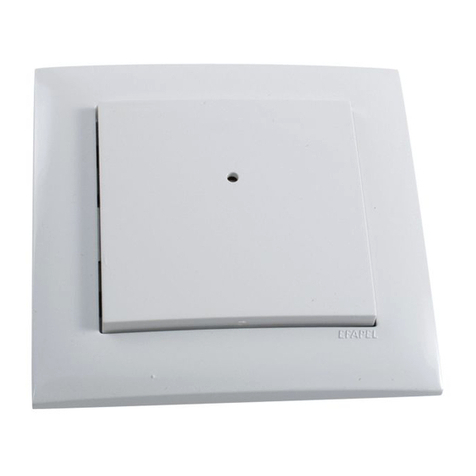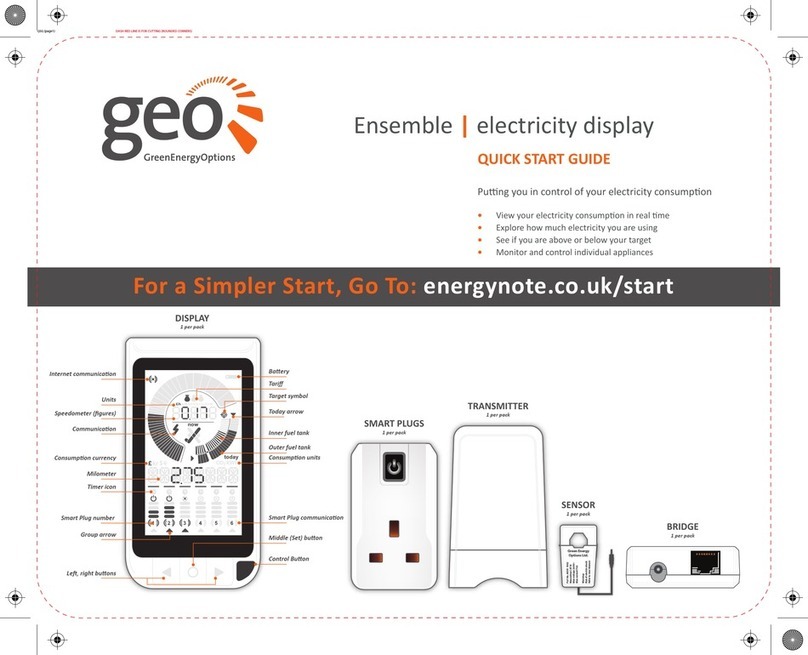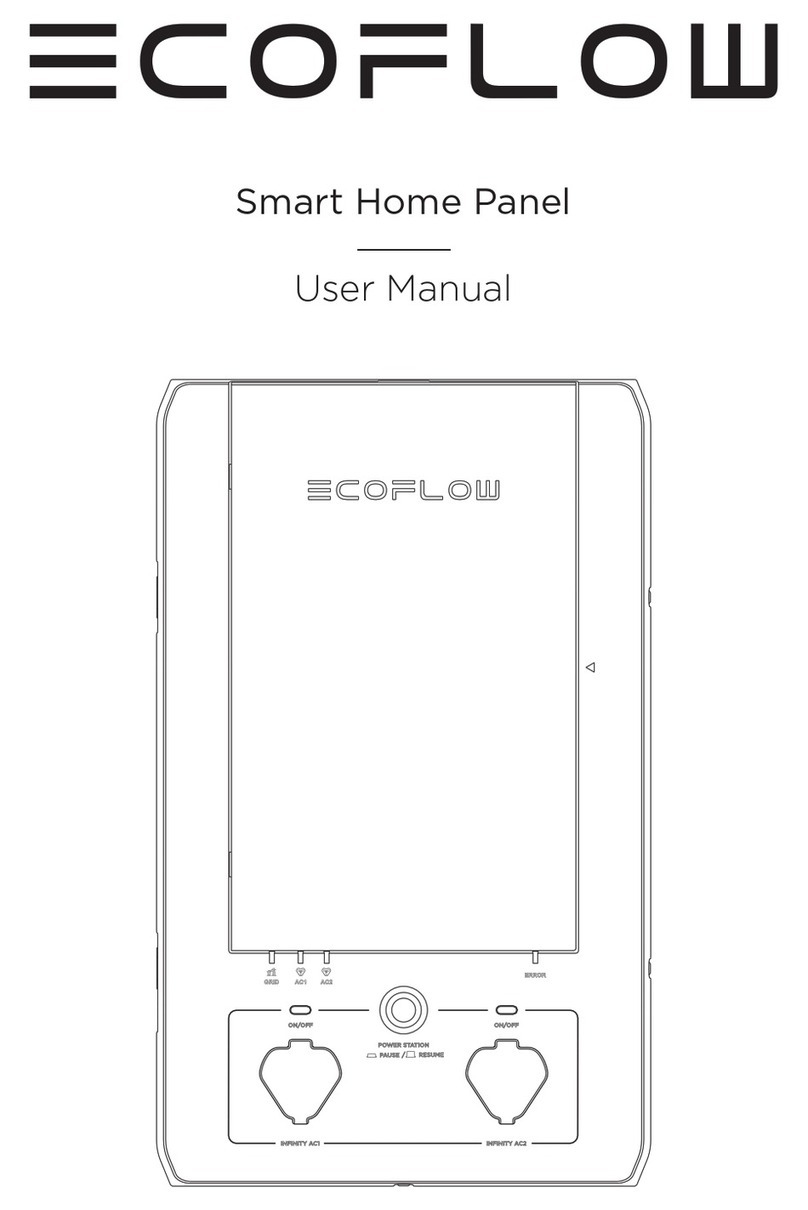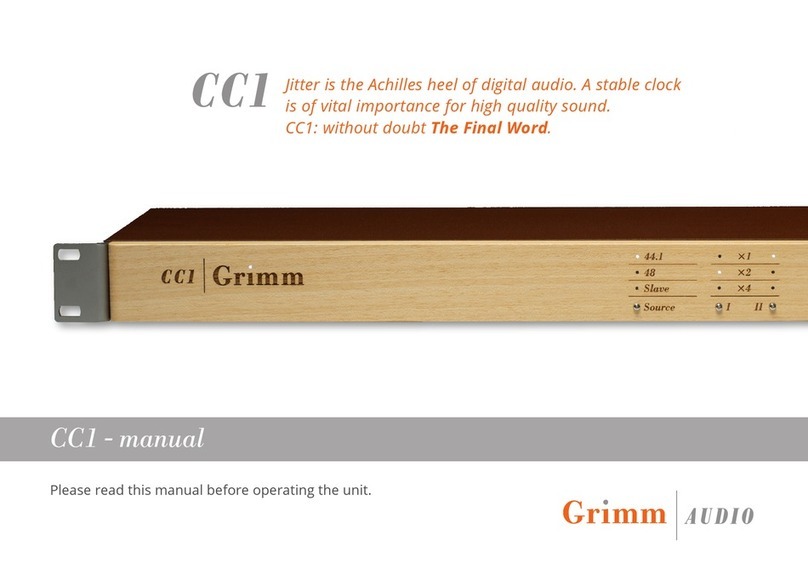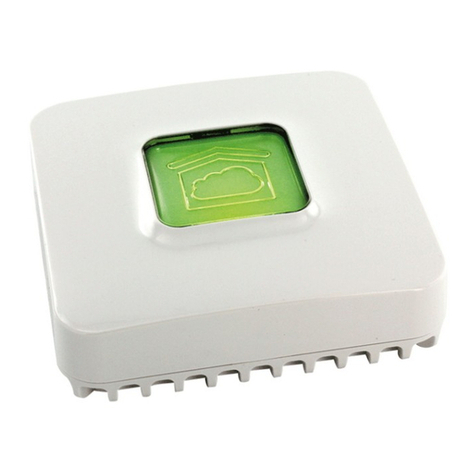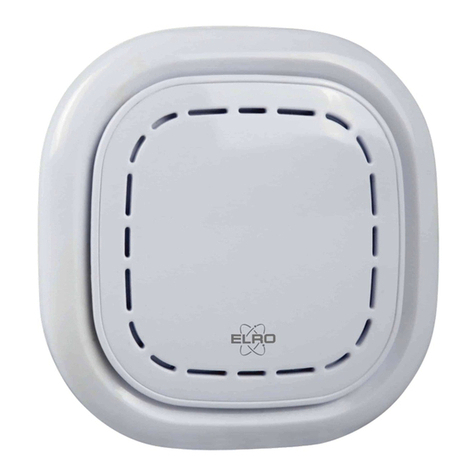SMA Solar Technology SUNNY HOME MANAGER 2.0 User manual

Operating manual
SUNNY HOME MANAGER 2.0
HM-20-BE-en-18 | Version 1.8ENGLISH

Legal Provisions SMA Solar Technology AG
Operating manualHM-20-BE-en-182
Legal Provisions
The information contained in these documents is the property of SMA Solar Technology AG. No part of this document
may be reproduced, stored in a retrieval system, or transmitted, in any form or by any means, be it electronic,
mechanical, photographic, magnetic or otherwise, without the prior written permission of SMA Solar Technology AG.
Internal reproduction used solely for the purpose of product evaluation or other proper use is allowed and does not
require prior approval.
SMA Solar Technology AG makes no representations or warranties, express or implied, with respect to this
documentation or any of the equipment and/or software it may describe, including (with no limitation) any implied
warranties of utility, merchantability, or fitness for any particular purpose. All such representations or warranties are
expressly disclaimed. Neither SMA Solar Technology AG nor its distributors or dealers shall be liable for any indirect,
incidental, or consequential damages under any circumstances.
The exclusion of implied warranties may not apply in all cases under some statutes, and thus the above exclusion may
not apply.
Specifications are subject to change without notice. Every attempt has been made to make this document complete,
accurate and up-to-date. Readers are cautioned, however, that product improvements and field usage experience may
cause SMA Solar Technology AG to make changes to these specifications without advance notice or per contract
provisions. SMA Solar Technology AG shall not be responsible for any damages, including indirect, incidental or
consequential damages, caused by reliance on the material presented, including, but not limited to, omissions,
typographical errors, arithmetical errors or listing errors in the content material.
SMA Warranty
You can download the current warranty conditions from the Internet at www.SMA-Solar.com.
Software Licenses
The software licenses for the installed software modules (Open Source) are contained in the SunnyHomeManager
software. Upon connecting the SunnyHomeManager with a web browser, you will find the licenses at the following
address: http://###/legal_notices.txt, for example http://192.168.22.11/legal_notices.txt. The IP address (in this
example, 192.168.22.11) will be assigned by your router for the SunnyHomeManager. You will find further
information on determining the IP address in your router documentation.
Trademarks
All trademarks are recognized, even if not explicitly identified as such. Missing designations do not mean that a
product or brand is not a registered trademark.
SMA Solar Technology AG
Sonnenallee 1
34266 Niestetal
Germany
Phone +49 561 9522-0
Fax +49 561 9522 100
www.SMA.de
E-mail: [email protected]
Status: 5/31/2022
Copyright © 2022 SMA Solar Technology AG. All rights reserved.

Table of Contents
SMA Solar Technology AG
Operating manual 3HM-20-BE-en-18
Table of Contents
1 Information on this Document..................................................................................................... 8
1.1 Validity ............................................................................................................................................................. 8
1.2 Target Group ................................................................................................................................................... 8
1.3 Levels of warning messages............................................................................................................................ 8
1.4 Symbols in the Document................................................................................................................................ 8
1.5 Typographical Elements in the Document...................................................................................................... 9
1.6 Designations in the Document ........................................................................................................................ 9
1.7 Additional Information..................................................................................................................................... 9
2 Safety ............................................................................................................................................ 10
2.1 Intended Use.................................................................................................................................................... 10
2.2 IMPORTANT SAFETY INSTRUCTIONS......................................................................................................... 10
2.3 Cyber Security ................................................................................................................................................. 12
3 Service Description....................................................................................................................... 13
4 Scope of Delivery ......................................................................................................................... 15
5 Product Overview ........................................................................................................................ 16
5.1 Product Description.......................................................................................................................................... 16
5.2 Symbols on the Product................................................................................................................................... 16
5.2.1 Light-Emitting Diodes (LEDs)............................................................................................................................. 16
5.2.2 Type Label ........................................................................................................................................................ 17
5.3 Components for Operating the Sunny Home Manager............................................................................... 18
5.3.1 Basic Operation ............................................................................................................................................... 18
5.3.2 Operation of a PV system with SMA inverters .............................................................................................. 18
5.3.3 Operation of a PV system with third-party inverters....................................................................................... 19
5.3.4 Components for the control of loads .............................................................................................................. 19
6 System Structure........................................................................................................................... 21
6.1 System Requirements....................................................................................................................................... 21
6.2 System Topology ............................................................................................................................................. 21
7 Mounting....................................................................................................................................... 23
7.1 Requirements for Mounting the Sunny Home Manager ............................................................................... 23
7.2 Mounting the Sunny Home Manager on the Top-Hat Rail........................................................................... 23
8 Connection .................................................................................................................................... 24
8.1 Safety during Electrical Connection ............................................................................................................... 24
8.2 Connecting the Voltage Supply...................................................................................................................... 24
8.2.1 Requirements for connecting the voltage supply ........................................................................................... 24
8.2.2 Connecting the Voltage Supply up to 63 A................................................................................................... 25
8.2.3 Connecting the Voltage Supply greater than 63 A....................................................................................... 26
8.3 Establishing communication to Sunny Portal.................................................................................................. 27
8.3.1 Preparing for Speedwire Communication ...................................................................................................... 27
8.3.2 Connecting the Sunny Home Manager to the Router ................................................................................... 27
8.3.3 Testing the Connection to Sunny Portal .......................................................................................................... 28
9 Getting Started ............................................................................................................................. 30
9.1 Creating a Sunny Home Manager System in Sunny Portal.......................................................................... 30
9.2 User Interface of the Sunny Home Manager System.................................................................................... 33
9.2.1 Accessing the user interface ............................................................................................................................ 33
9.2.2 Overview of the User Interface ....................................................................................................................... 33

Table of Contents SMA Solar Technology AG
Operating manualHM-20-BE-en-184
9.2.3 Overview of Menus and Pages ...................................................................................................................... 34
9.2.4 Working with Diagrams................................................................................................................................... 36
9.2.4.1 Setting the Display Period .............................................................................................................................. 36
9.2.4.2 Saving Diagram Data..................................................................................................................................... 37
9.2.4.3 Printing Diagram Data.................................................................................................................................... 37
9.3 Logging In and Out of Sunny Portal............................................................................................................... 37
10 Configuration of the Sunny Home Manager system ................................................................ 38
10.1 System data ..................................................................................................................................................... 38
10.1.1 Overview System Data .................................................................................................................................... 38
10.1.2 Changing System Data.................................................................................................................................... 38
10.1.3 Changing the System Name ........................................................................................................................... 39
10.1.4 Deleting the System.......................................................................................................................................... 39
10.1.5 Entering the Nominal System Power............................................................................................................... 39
10.1.6 Changing or Deleting the System Image........................................................................................................ 40
10.2 Configuring Strings.......................................................................................................................................... 40
10.3 Changing Operator Data ............................................................................................................................... 42
10.4 Configuring parameters .................................................................................................................................. 42
10.4.1 General Information about the Configuration of the Parameters ................................................................. 42
10.4.2 Entering the Feed-In Tariff and Electricity Tariff .............................................................................................. 42
10.4.3 Configuring Limitation of Active Power Feed-In.............................................................................................. 43
10.4.4 Activating or Deactivating Grid Management Services................................................................................ 45
10.4.5 Entering time period control for charging the battery-storage system .......................................................... 45
10.4.6 Entering Peak Load Shaving............................................................................................................................ 46
10.4.7 Setting the Optimization Target ...................................................................................................................... 47
10.4.8 Entering the Amount of CO2 Avoided ........................................................................................................... 48
10.4.9 Entering the Expected Yield............................................................................................................................. 48
10.5 Releasing Data ................................................................................................................................................ 49
11 Device Administration.................................................................................................................. 50
11.1 Device Overview Tab...................................................................................................................................... 50
11.1.1 Filtering the Device Overview ......................................................................................................................... 51
11.1.2 Configuring the Device Properties................................................................................................................... 51
11.1.3 Changing Device Names and Description..................................................................................................... 51
11.1.4 Activating Data Acceptance............................................................................................................................ 52
11.2 Overview of New Devices Tab ...................................................................................................................... 52
11.2.1 Maximum Number of Supported Devices...................................................................................................... 53
11.2.2 Adding or Replacing Devices.......................................................................................................................... 54
11.3 Configuring the Sunny Home Manager......................................................................................................... 56
11.3.1 Selecting Simple or Extended Configuration.................................................................................................. 56
11.3.2 Setting Automatic Updates.............................................................................................................................. 56
11.3.3 Enabling Speedwire Encryption...................................................................................................................... 56
11.3.4 Configuring AVM FRITZ!Box Smart Home Control ....................................................................................... 57
11.3.5 Configuring the display of the current status.................................................................................................. 57
11.3.6 Setting the Edimax Smart Plug ........................................................................................................................ 58
11.3.7 Enabling System Communication Monitoring ................................................................................................ 58
11.3.8 Setting the Data Request Interval .................................................................................................................... 58
11.3.9 Activating SMA Smart Home .......................................................................................................................... 59
11.3.9.1 Activating the Self-Consumption Function...................................................................................................... 59
11.3.9.2 Setting up Forecast-Based Battery Charging................................................................................................. 60
11.3.10 Configuring the External Current Transformer................................................................................................ 60
11.3.11 Changing the Meter Configuration................................................................................................................. 61
11.3.12 Configuring Modbus Interfaces ...................................................................................................................... 61
11.4 Adding and Configuring the Inverter ............................................................................................................. 62
11.4.1 Adding an Inverter ........................................................................................................................................... 62
11.4.2 Entering Line Conductors................................................................................................................................. 62

Table of Contents
SMA Solar Technology AG
Operating manual 5HM-20-BE-en-18
11.4.3 Entering the PV Array Power ........................................................................................................................... 62
11.5 Adding a Switching Device............................................................................................................................. 63
11.5.1 Adding a Radio-Controlled Socket ................................................................................................................. 63
11.5.2 Adding Modbus Device .................................................................................................................................. 64
11.6 Adding direct communicating loads............................................................................................................... 65
11.6.1 Pairing Loads via EEBus................................................................................................................................... 65
11.7 Replacing the Sunny Home Manager............................................................................................................ 66
11.7.1 Resetting the Sunny Home Manager.............................................................................................................. 66
11.7.2 Reassigning the Sunny Home Manager to the Sunny Portal System after the Reset................................... 67
11.8 Restarting the Sunny Home Manager............................................................................................................ 68
11.9 Deleting devices from Sunny Portal................................................................................................................ 68
12 Load Control ................................................................................................................................. 69
12.1 Background Information.................................................................................................................................. 69
12.1.1 Types of Loads ................................................................................................................................................. 69
12.1.2 Communicating with Loads.............................................................................................................................. 70
12.1.3 Controlling Loads via a Time Period ............................................................................................................... 70
12.1.4 Prioritizing Loads.............................................................................................................................................. 72
12.2 Load Overview and Planning ......................................................................................................................... 72
12.3 Configuring Switching Devices....................................................................................................................... 74
12.3.1 Safety when Configuring Switching Devices.................................................................................................. 74
12.3.2 Requirements for Configuring Switching Devices........................................................................................... 75
12.3.3 Assigning a Load.............................................................................................................................................. 75
12.3.4 Entering the Device Name............................................................................................................................... 75
12.3.5 Configuring the Operating Mode................................................................................................................... 75
12.3.6 Enabling Start-up Detection for Radio-Controlled Sockets ............................................................................ 76
12.4 Configuring Load Characteristics ................................................................................................................... 77
12.4.1 Entering general information ........................................................................................................................... 78
12.4.2 Selecting the Load Type................................................................................................................................... 79
12.4.3 Selecting Program Controllability.................................................................................................................... 79
12.4.4 Entering the Power Consumption .................................................................................................................... 80
12.4.5 Entering the Maximum Program Operating Time .......................................................................................... 80
12.4.6 Entering the Minimum Switch-On and Switch-Off Time ................................................................................. 81
12.4.7 Setting the Priority of the Load......................................................................................................................... 81
12.4.8 Assigning a Switching Device ......................................................................................................................... 81
12.4.9 Setting Measuring and Switching of the Assigned Device............................................................................ 82
12.4.10 Setting Automatic Switch-Off........................................................................................................................... 82
12.5 Configuring the Time Period............................................................................................................................ 83
12.6 Directly Controlling Loads............................................................................................................................... 86
13 Visualization of the energy management.................................................................................. 87
13.1 System selection with system list ..................................................................................................................... 87
13.2 System overview .............................................................................................................................................. 88
13.3 Current Status And Forecast ........................................................................................................................... 88
13.3.1 Overview Current Status Area ........................................................................................................................ 88
13.3.2 Overview Forecast and Recommended Action Area .................................................................................... 90
13.4 Energy Balance................................................................................................................................................ 91
13.5 Load Balance and Control.............................................................................................................................. 94
13.5.1 Overview load balance and control............................................................................................................... 94
13.5.2 Selecting the Load Display .............................................................................................................................. 98
13.6 Display of the nominal system power ............................................................................................................ 98
13.6.1 System yield in the annual comparison .......................................................................................................... 98
13.6.2 Nominal system power analysis .....................................................................................................................100
13.6.2.1 Overview analysis........................................................................................................................................... 100
13.6.2.2 Setting the Device Selection........................................................................................................................... 102

Table of Contents SMA Solar Technology AG
Operating manualHM-20-BE-en-186
14 Monitoring of the Sunny Home Manager system.....................................................................103
14.1 Overview of system monitoring ......................................................................................................................103
14.1.1 Communication Monitoring.............................................................................................................................103
14.1.2 Inverter Comparison ........................................................................................................................................103
14.1.3 SMA Smart Connected....................................................................................................................................104
14.1.4 System Configuration.......................................................................................................................................104
14.1.5 Further PV System Monitoring Options...........................................................................................................104
14.2 Configuring PV System Monitoring ................................................................................................................105
14.2.1 Setting Communication Monitoring ................................................................................................................105
14.2.2 Setting the Inverter Comparison......................................................................................................................105
14.2.3 Activating SMA Smart Connected..................................................................................................................106
14.2.4 Editing the System Configuration ....................................................................................................................106
14.2.5 Filter and confirm messages in the system logbook.......................................................................................107
14.2.6 Configuring Reports .........................................................................................................................................108
15 Presentation of the Sunny Home Manager system...................................................................111
15.1 PV System Profile .............................................................................................................................................111
15.2 Make PV system profile publicly available....................................................................................................111
15.3 Releasing and publishing pages.....................................................................................................................111
15.4 Specifying the System Home Page.................................................................................................................112
16 User Management .......................................................................................................................113
16.1 User Groups and User Rights .........................................................................................................................113
16.2 Creating a New User......................................................................................................................................114
16.3 Deleting a User................................................................................................................................................114
16.4 Changing User Rights......................................................................................................................................115
16.5 Changing User Information.............................................................................................................................115
17 Password Information .................................................................................................................116
17.1 Requirements for a Secure System Password ................................................................................................116
17.2 Required Passwords ........................................................................................................................................116
17.3 Changing Passwords.......................................................................................................................................117
17.4 Procedure in Case of Forgotten Passwords ...................................................................................................117
18 Troubleshooting............................................................................................................................119
18.1 Error message on the Sunny Home Manager...............................................................................................119
18.2 Problems during Registration with the System Setup Assistant ....................................................................120
18.3 Problems with Integration of Devices .............................................................................................................123
18.4 Problems with Data Update............................................................................................................................125
18.5 Problems when Configuring and Controlling Radio-Controlled Sockets......................................................128
18.6 Using the Sunny Home Manager Assistant in case of network problems...................................................129
18.7 Messages in the system logbook....................................................................................................................130
19 Decommissioning .........................................................................................................................133
19.1 Decommissioning the Sunny Home Manager ...............................................................................................133
19.2 Packing the Product for Shipment...................................................................................................................133
19.3 Disposing of the Product .................................................................................................................................133
20 Appendix ......................................................................................................................................134
20.1 Application example forecast-based battery charging.................................................................................134
20.1.1 Objective and Background Information .........................................................................................................134
20.1.2 Setting up Forecast-Based Battery Charging..................................................................................................135

Table of Contents
SMA Solar Technology AG
Operating manual 7HM-20-BE-en-18
21 Technical Data ..............................................................................................................................137
22 Declarations of Conformity .........................................................................................................139
22.1 EU Declaration of Conformity.........................................................................................................................139
22.2 UK Declaration of Conformity ........................................................................................................................139
23 Contact ..........................................................................................................................................140

1 Information on this Document SMA Solar Technology AG
Operating manualHM-20-BE-en-188
1 Information on this Document
1.1 Validity
This document is valid for:
• Sunny Home Manager 2.0 from software package 2.09.02.R
1.2 Target Group
This document is intended for qualified persons and end users. Only qualified persons are allowed to perform the
activities marked in this document with a warning symbol and the caption "Qualifiedperson". Tasks that do not require
any particular qualification are not marked and can also be performed by end users. Qualified persons must have the
following skills:
• Training in how to deal with the dangers and risks associated with installing, repairing and using electrical devices
and installations
• Training in the installation and commissioning of electrical devices and installations
• Knowledge of all applicable laws, standards and directives
• Knowledge of and compliance with this document and all safety information
1.3 Levels of warning messages
The following levels of warning messages may occur when handling the product.
DANGER
Indicates a hazardous situation which, if not avoided, will result in death or serious injury.
WARNING
Indicates a hazardous situation which, if not avoided, could result in death or serious injury.
CAUTION
Indicates a hazardous situation which, if not avoided, could result in minor or moderate injury.
NOTICE
Indicates a situation which, if not avoided, can result in property damage.
1.4 Symbols in the Document
Icon Explanation
Information that is important for a specific topic or goal, but is not safety-relevant
☐
Indicates a requirement for meeting a specific goal
☑
Desired result
✖
A problem that might occur.
Example
Sections describing activities to be performed by qualified persons only

1 Information on this Document
SMA Solar Technology AG
Operating manual 9HM-20-BE-en-18
1.5 Typographical Elements in the Document
Typographical element Use Example
bold • Messages
• Terminals
• Elements on a user interface
• Elements to be selected
• Elements to be entered
• Connect the insulated conductors
to the terminals X703:1 to
X703:6.
• Enter 10 in the field Minutes.
>• Connects several elements to be
selected
• Go to Settings > Date.
[Button]
[Key]
• Button or key to be clicked on or
pressed down
• Select [Enter].
# • Placeholder for variable components
(e.g., parameter names)
• Parameter WCtlHz.Hz#
1.6 Designations in the Document
Complete designation Designation in this document
SunnyHomeManager 2.0 SunnyHomeManager, product
1.7 Additional Information
For more information, please go to www.SMA-Solar.com.
Title and information content Type of information
SMA SMART HOME - Compatibility list for the SunnyHomeManager 2.0 Technical Information
"SMASmartHome"
The System Solution for Greater Independence
Planning Guidelines
"SMA SMART HOME - Battery Charging Management with Time-of-Use Energy
Tariffs"
Technical Information
"SMA SMART HOME Load Control Using Relays or Contactors - Example: Heat-
ing Rod"
Technical Information
SMAFLEXIBLESTORAGESYSTEM
Increased Self-Consumption with SunnyIsland and SunnyHomeManager
System description
"SUNNYPORTAL powered by ennexOS" User Manual
"PUBLIC CYBER SECURITY - Guidelines for a Secure PV System Communication" Technical Information
User information on the operation and features of the product User information on the
SunnyPortal user interface
Answers to frequently asked questions FAQs in SunnyPortal and at On-
line Service Center

2 Safety SMA Solar Technology AG
Operating manualHM-20-BE-en-1810
2 Safety
2.1 Intended Use
The SunnyHomeManager is the central product responsible for energy management in households with a
photovoltaics (PV) system and battery-storage system for self-consumption. The SunnyHomeManager continuously
records the solar power generated by the PV system and, if desired, ensures optimal use of the solar power by
combining all suitable energy flows in the household to create an intelligent system and, upon request, control it
automatically.
The online portal Sunny Portal is used to operate and configure the SunnyHomeManager. The user can make all the
required and desired settings here.
The SunnyHomeManager is not an energy meter for power consumption in the sense of the EU directive 2004/22/
EG (MID). The SunnyHomeManager may not be used for billing purposes. The data collected by the
SunnyHomeManager relating to the power generated by your PV system may deviate from the data of the main
energy meter, which is used for billing purposes.
The SunnyHomeManager supports up to 24 devices and can actively control a maximum of 12 devices.
The SunnyHomeManager is not suitable for controlling life-sustaining medical devices. A power outage must not lead
to personal injury. Loads connected to the SunnyHomeManager must have an CE, UKCA, RCM or UL identification
label.
The SunnyHomeManager is approved for use in all EU member states, in Great Britain, Australia and selected other
countries.
The type label must remain permanently attached to the product.
Environment
The product is designed for indoor use only.
The SunnyHomeManager may only be connected to the subdistribution of the household on the load side behind the
energymeter of the electric utility company. The SunnyHomeManager must be installed in a switch cabinet or in a
domestic installation cabinet in the area of the additional applications intended for this as per VDE-AR-N
4100:2019-04.
It is possible to use the SunnyHomeManager in delta IT grids. When using the SunnyHomeManager in delta IT
grids, the cumulative power values are correctly measured. Due to the measuring principle of the
SunnyHomeManager, other measured values may be incorrect.
Statutory warranty
Use SMA products only in accordance with the information provided in the enclosed documentation and with the
locally applicable laws, regulations, standards and directives. Any other application may cause personal injury or
property damage.
Alterations to the SMA products, e.g., changes or modifications, are only permitted with the express written permission
of SMA Solar Technology AG. Unauthorized alterations will void guarantee and warranty claims and in most cases
terminate the operating license. SMA Solar Technology AG shall not be held liable for any damage caused by such
changes.
Any use of the product other than that described in the Intended Use section does not qualify as the intended use.
The enclosed documentation is an integral part of this product. Keep the documentation in a convenient, dry place for
future reference and observe all instructions contained therein.
This document does not replace any regional, state, provincial, federal or national laws, regulations or standards that
apply to the installation, electrical safety and use of the product. SMA Solar Technology AG assumes no responsibility
for the compliance or non-compliance with such laws or codes in connection with the installation of the product.
2.2 IMPORTANT SAFETY INSTRUCTIONS
Keep the manual for future reference.

2 Safety
SMA Solar Technology AG
Operating manual 11HM-20-BE-en-18
This section contains safety information that must be observed at all times when working.
The product has been designed and tested in accordance with international safety requirements. As with all electrical
or electronical devices, there are residual risks despite careful construction. To prevent personal injury and property
damage and to ensure long-term operation of the product, read this section carefully and observe all safety
information at all times.
DANGER
Danger to life due to electric shock when live components or cables are touched
High voltages are present in the conductive components or cables of the product. Touching live parts and cables
results in death or lethal injuries due to electric shock.
• Disconnect the product from voltage sources and make sure it cannot be reconnected before carrying out any
work on the product.
• Before carrying out any work on the product, disconnect the grid side from all voltage sources using the
installed disconnect switch.
• Ensure that the conductors to be connected are de-energized.
• Clean the product with a dry cloth only.
• Only use the product in a dry environment and keep it away from moisture.
• Install the product in the switch cabinet only and ensure that the connection areas for the line conductors and
the neutral conductor are behind a cover or have contact protection.
• Observe the prescribed minimum clearance between the network cable and live installation components, or
use suitable insulation.
DANGER
Danger to life due to electric shock if external disconnect switch is missing
High voltages are present in the conductive components. Touching live parts results in death or lethal injuries due to
electric shock.
• Install an external disconnect switch between the product and the grid-connection point. The external
disconnector must be close to the product and easily accessible.
• Before carrying out any work on the product, disconnect the grid side from all voltage sources using the
installed disconnect switch.
DANGER
Danger to life due to electric shock in case of overvoltages and if surge protection is missing
Overvoltages (e.g. in the event of a flash of lightning) can be further conducted into the building and to other
connected devices in the same network via the network cables or other data cables if there is no surge protection.
Touching live parts and cables results in death or lethal injuries due to electric shock.
• Ensure that all devices in the same network are integrated in the existing overvoltage protection.
WARNING
Danger of fire due to missing or incorrect fuse
If a fuse is missing or incorrect and a fault occurs, a fire may be caused. This can result in death or serious injury.
• Protect the line conductors of the product with a fuse or a selective circuit breaker with max. 63A.

2 Safety SMA Solar Technology AG
Operating manualHM-20-BE-en-1812
NOTICE
Manipulation of system data in networks
You can connect the supported SMA products to the Internet. When connected to the Internet, there is a risk that
unauthorized users can access and manipulate the data of your system.
• Set up a firewall.
• Close unnecessary network ports.
• If absolutely necessary, only enable remote access via a virtual private network (VPN).
• Do not use the port forwarding feature. This also applies to the used Modbus ports.
• Disconnect system components from other network components (network segmentation).
• Even if the product is used as energy and grid-supply meter, the system setup assistant in SunnyPortal must be
used and an administrator account created.
DHCP Server is recommended.
The DCHP server automatically assigns the appropriate network settings to your nodes in the local network. A
manual network configuration is therefore not necessary. In a local network, the Internet router is usually the
DHCP server. If the IP addresses in the local network are to be assigned dynamically, DHCP must be activated in
the Internet router (see the Internet router manual). In order to receive the same IP address by the internet router
after a restart, set the MAC address binding.
In networks where no DHCP server is active, proper IP addresses must be assigned from the free address pool of
the network segment to all network participants to be integrated during commissioning.
2.3 Cyber Security
Most operating activities such as monitoring and control of systems can be done locally by the PV system operator or
service personnel without the need for data communication via public Internet infrastructure.
In other use cases of systems, the PV systems are also part of the global communication system, which is based on
Internet infrastructures.
The data communication via Internet is an up-to-date, economically viable and customer-friendly approach in order to
enable easy access for the following modern applications such as:
• Cloud platforms (e.g. SunnyPortal)
• Smartphones or other mobile devices (iOS or Android apps)
• SCADA systems, which are remotely connected
• Utility interfaces for grid management services
Alternatively, selected and secured communication interfaces may be used. These solutions are no longer state of the
art and are very expensive to use (special communication interfaces, separate wide area networks and more).
When using the Internet infrastructure, the systems connected to the Internet are entering a basically unsecure area.
Potential attackers constantly seek vulnerable systems. Usually, they are criminally motivated, have a terrorist
background or aim to disrupt business operations. Without taking any measures to protect systems and other systems
from such misuse, a data communication system should not be connected to the Internet.
Communication between the SMA internet platform SunnyPortal and the SunnyHomeManager takes place via the
Webconnect process as well as the HTTPS protocol, i.e. an authenticated and encrypted connection and thus allows
safe online communication.
You can find the current recommendations by SMA Solar Technology AG on the topic of Cyber Security in the
Technical Information "PUBLIC CYBER SECURITY - Guidelines for a Secure PV System Communication" at www.SMA-
Solar.com.

3 Service Description
SMA Solar Technology AG
Operating manual 13HM-20-BE-en-18
3 Service Description
The field of applications for the SunnyHomeManager ranges from its use as a simple energy meter to monitoring a
PV system and intelligent energy management.
SunnyHomeManager as energy meter
The SunnyHomeManager detects energy flows in both directions:
• Continuous recording of the energy generated by the PV system
• Measurement of the feed-in of generated energy into the utility grid as well as the consumption of energy from the
utility grid takes place at the point of interconnection.
SunnyHomeManager in systems without self-consumption
Monitoring
Basic PV system status monitoring to confirm correct system performance:
All energy flows are recorded and evaluated. You will be notified about disturbances at an early stage.
Limitation of Active Power Feed-In
Local legal regulations, for example the Renewable Energy Sources Act (EEG) in Germany, can call for permanent
limitation of active power feed-in for your PV system - that is, a limitation of the active power fed into the utility grid to a
fixed amount or a percentage share of the installed nominal PV system power.
The SunnyHomeManager monitors the active power that is fed into the utility grid. If the active power feed-in exceeds
the prescribed threshold, the SunnyHomeManager will limit the PV generation of the PV and hybrid inverters.
SunnyHomeManager in systems with self-consumption
Self-consumption means that the energy produced by your PV system is consumed at the site where it is generated.
Self-consumption reduces the amount of energy that you feed into the utility grid, but also the amount of energy that
you purchase from your grid operator.
Energy Management - Monitoring and Forecast
Creation of a PV generation forecast - based on the location-based weather forecast
Creation of a load profile - based on individual analysis of time-dependent energy consumption:
Taking into account different electricity prices, the SunnyHomeManager makes recommendations for the prudent use
of electrical energy. This allows you to selectively switch on loads at times when electricity is cheap (loads include, for
example, home appliances such as dishwashers, dryers, washing machines, as well as heating and hot water
preparation via heat pumps, and heating elements, but also charging stations for e-mobility).
To learn the load profile, the consumption data should be available over a period of at least 2 weeks.
The forecast generated by the SunnyHomeManager is calculated from the estimated energy balance from generation
and consumption for the next 48 hours.
Optimized self-consumption through load control
The SunnyHomeManager measures the power consumption of all connected loads and records both the power
consumption and the usage time of a load. The SunnyHomeManager uses this individual load profile combined with
the location-based weather forecast to support your increased self-consumption:
To control loads, there are the following options:
• Control of loads that do not communicate directly via switching devices such as radio-controlled sockets or relays,
e.g. Modbus devices that control the SG Ready interface of loads
• Control of directly communicating loads via the standard protocol interfaces EEBus or SEMP
The SunnyHomeManager switches home appliances on automatically when PV energy is available.

3 Service Description SMA Solar Technology AG
Operating manualHM-20-BE-en-1814
Optimized self-consumption through dynamic active power limitation
• Through forecast-based load control, the SunnyHomeManager ensures that even on sunny days excess energy
hardly ever gets lost that has to be "curtailed" due to the limitation of the active power.
• When using SMA battery inverters, the SunnyHomeManager prevents derating losses that can be caused by
limiting the active power feed-in. Taking the PV generation forecast and the consumption forecast into account, the
time and duration of battery charging are chosen so that the battery is charged when PV energy is available.
Increased self-consumption through forecast-based battery charging
The SunnyHomeManager increases the efficiency of your PV system by storing the excess energy generated during
the midday peak, which is not allowed to be fed into the utility grid due to the active power limitation, in batteries.
By means of the location-based weather forecast, the SunnyHomeManager can predict the solar irradiation for some
hours to days and check whether derating losses due to the limitation of PV grid feed-in are to be expected for the
current or following day. This means that in the afternoon of the current day only as much PV energy is charged to the
battery as to ensure that, with the remaining battery charge, grid-supplied power at night and on the morning of the
next day can be avoided. Any derating losses forecast for the following day are avoided by the free storage capacity
of the more heavily discharged battery.
Increased self-consumption through peak load shaving
In systems with SMA battery or hybrid inverters, the self-consumption portion can be additionally increased and more
electricity costs saved by virtually distributing the total storage capacity of the battery between increased self-
consumption and peak load shaving (multi-use). In doing so, the battery can be integrated even more flexibly into your
energy management
• Increased self-consumption - through flexible use of the self-generated solar power stored in the battery at times
when insufficient or no solar power is produced
• Peak load shaving - limitation of power consumption from the utility grid; any increased energy demand at certain
times is drawn from the battery

4 Scope of Delivery
SMA Solar Technology AG
Operating manual 15HM-20-BE-en-18
4 Scope of Delivery
Check the scope of delivery for completeness and any externally visible damage. Contact your distributor if the scope
of delivery is incomplete or damaged.
Reset
SUNNY HOME MANAGER 2.0
AB C
SMA Solar Technology AG
Sonnenallee 1
34266 Niestetal Germany
Sunny Home Manager 2.0
Figure 1: Components included in scope of delivery
Position Quantity Designation
A 1 SunnyHomeManager
B 1 Quick reference guide for commissioning
C 1 Label with serial number (SN), registration ID (RID) and identification
key (PIC) for registration of the device by means of the setup assis-
tant in the SunnyPortal

5 Product Overview SMA Solar Technology AG
Operating manualHM-20-BE-en-1816
5 Product Overview
5.1 Product Description
A
E
B
C
Reset
SUNNY HOME MANAGER 2.0
Reset
D
A
Figure 2: Sunny Home Manager 2.0
Position Designation
A Connection area for line conductors and neutral conductor
B Light-emitting diodes
C Reset button
D Network terminal (Speedwire/Ethernet)
E Type label
5.2 Symbols on the Product
5.2.1 Light-Emitting Diodes (LEDs)
The LEDs indicate the operating state of the product.
Reset
SUNNY HOME MANAGER 2.0
A
B
C
Figure 3: LEDs of the SunnyHomeManager
Position LED symbol Designation Explanation
A Status LED Displays the operating state of the SunnyHomeManager (op-
eration, startup process, error status)

5 Product Overview
SMA Solar Technology AG
Operating manual 17HM-20-BE-en-18
Position LED symbol Designation Explanation
B COM LED Displays the status of the Ethernet connection to the router
C Performance LED Displays the operating state, energy management, portal con-
nection and error status.
SunnyHomeManager operating states
LED Status Explanation
Status LED glowing green
flashing green
glowing red
flashing red
SunnyHomeManager is switched on.
The firmware is being updated.
SunnyHomeManager is starting.
No connection to SunnyPortal.
COM LED Off
glowing green
flashing green
No Ethernet connection.
Ethernet connection is established.
SunnyHomeManager is sending or receiving data.
Performance LED Off
glowing green
flashing green
glowing red
flashing red
SunnyHomeManager is not registered in SunnyPortal.
Energy management in SunnyHomeManager is running
smoothly.
An error has occurred. The error has already been reported to
Sunny Portal.
An error has occurred. The error has not yet been reported to
Sunny Portal.
No connection to SunnyPortal.
5.2.2 Type Label
Data on the Type Label
The type label clearly identifies the product. The type label is located on the side of the product and must remain
permanently attached to the product. You will find the following information on the type label:
• Assembly name
• Hardware version (Version)
• Serial number (SN)
• Registration ID (RID)
• Identification key (PIC)
• MAC address (MAC)
You will require the information on the type label to use the product safely and when seeking customer support from
Service (see Section23, page140).

5 Product Overview SMA Solar Technology AG
Operating manualHM-20-BE-en-1818
Symbols on the type label
Icon Explanation
WEEE designation
Do not dispose of the product together with the household waste but in accordance with the
disposal regulations for electronic waste applicable at the installation site.
Protection class II
The product has a reinforced or double insulation between grid current circuit and output
voltage.
Qualified person
The product may only be installed by a qualified person.
CE marking
The product complies with the requirements of the applicable EU directives.
UKCA marking
The product complies with the regulations of the applicable laws of England, Wales and
Scotland.
RCM (Regulatory Compliance Mark)
The product complies with the requirements of the applicable Australian standards.
Data matrix code
2Dcode for device-specific characteristics
5.3 Components for Operating the SunnyHomeManager
5.3.1 Basic Operation
The following components are required for operating the SunnyHomeManager:
☐ Internet access via router (for SunnyPortal connection)
☐ PC with web browser
☐ Sunny Portal access
Router
The SunnyHomeManager establishes the internet connection to Sunny Portal via a router.
Via the Ethernet connection of the SunnyHomeManager to the router, the data read out by the integrated measuring
device of the SunnyHomeManager from all devices integrated in the system is sent to the SunnyPortal. The user can
make all the required settings for the SunnyHomeManager system via SunnyPortal.
SunnyPortal
SunnyPortal is an Internet portal which enables you to monitor and configure systems and to visualize system data.
The SunnyPortal system setup assistant is used to commission the SunnyHomeManager (to www.sunnyportal.com/
register)
5.3.2 Operation of a PV system with SMA inverters
The SunnyHomeManager organizes the electricity generated by the PV system and provided by inverters within the
loads in the household. The SunnyHomeManager regulates the feed-in of the residual current into the utility grid at
the point of interconnection.

5 Product Overview
SMA Solar Technology AG
Operating manual 19HM-20-BE-en-18
Inverters can communicate in two different ways with the SunnyHomeManager:
• Wired via SMASpeedwire/Ethernet
The inverter must be connected to the local network via a network cable (e.g. via a router).
• Wireless via SMASpeedwire/Wi-Fi
The SunnyHomeManager does not have its own a Wi-Fi connection, however it can communicate with all
devices connected to the same router.
The SunnyHomeManager supports all inverters with integrated or retrofitted Speedwire interface of SMA Solar
Technology AG. The inverters must have the current firmware version in each case (see the inverter product page at
www.SMA-Solar.com).
5.3.3 Operation of a PV system with third-party inverters
For the operation of the SunnyHomeManager in a system with third-party inverters, an SMAEnergyMeter as a PV
generation meter is required.
☐ The power output of the inverters from other manufacturers must be captured via a separate SMAEnergyMeter.
☐ The SMAEnergyMeter must be configured in SunnyPortal as a PV generation meter.
If third-party inverters are also used in the PV system, the SMAEnergyMeter handles the recording of the generated
PV energy. In hybrid systems with SMA inverters and inverters from other manufacturers, the generated energy of all
inverters is measured via the energy meter since it is used as the central PV generation meter. Upon registering and
configuring a PV generation meter in the SunnyHomeManager system, the SunnyHomeManager will receive the
power data of the SMA inverters on this PV generation meter.
Monitoring of the PV system and the dynamic limitation of the active power fed into the utility grid are not possible with
inverters from other manufacturers. In this case, verify whether operation of the PV system without dynamic active
power limitation is permitted in the given country, or whether dynamic active power limitation can be performed
independently by the inverter itself.
5.3.4 Components for the control of loads
At least one of the following compatible components must be present to control loads:
☐ Switching device, e.g. a radio-controlled socket, a relay or a Modbus device
☐ Device with EEBus or SEMP interface
Switching device
Devices that do not have a directly communicating data connection can be integrated into the energy management
system as an intermediate switch via radio-controlled sockets, relays or Modbus devices. The SunnyHomeManager
controls the switching device; the switching device can then switch the loads on and off via control signals from the
SunnyHomeManager. For example, the Modbus device MoxaE1214 offers the possibility to control a heat pump
via the relay output R0 (terminal 9 and 10).
At which times the SunnyHomeManager switches the switching device on or off automatically and without any further
manual operation depends on the configuration of the load and the current load planning configured in the
SunnyPortal: The SunnyHomeManager can measure the power consumption and length of the power consumption
of individual loads connected to a switching device and transmits these measured values to SunnyPortal. There, you
can control specific loads so that they are switched on if a lot of PV power is available, for example.
In addition, switching devices can be used purely for monitoring purposes, i.e. to measure the energy consumption of
individual loads.
Device with EEBus or SEMP interface
To control a load that communicates directly, this load must have an EEBus or SEMP interface that is compatible with
the SunnyHomeManager.
Links to additional information can be found at www.SMA‑Solar.com.
Table of contents

